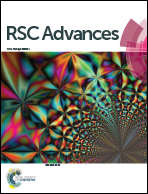Preparation of SiCp/Al composite–bismuthate glass material and its application in mirror blanks
Abstract
In this work, a low melting point bismuthate glass was developed for bonding on the 70 vol% SiCp/Al composite surface, and a novel SiCp/Al composite–glass material was prepared. The data measured for the mechanical properties showed that the shear strength of the composite–glass material achieved 5.44 MPa. The morphology was characterized using field emission gun scanning electron microscopy (FEGSEM), X-ray photoelectron spectroscopy (XPS) and line-scan. The mutual solubility between the glass and the composite formed an interface layer of about 2 μm in thickness. The bond strength of the glass–matrix was greater than that of the glass–particle. This can be attributed to the chemical bonding between the glass and the matrix. During bonding, a strong chemical bond at the interface resulted from the incorporation of the oxide film on the composite surface into the glass. The metallic bonding of the matrix was gradually substituted for the ionic-covalent bonding of the glass within the interface. In the local region, the Bi ions in the glass gained free electrons from the Al metal atoms of the composite, producing a precipitate of Bi atoms on the composite surface which formed an interlocking composite–glass structure. The polished composite–glass material achieved 0.05λ at 632.8 nm p-v surface error, showing that the novel material was suitable for application of mirror blank.


 Please wait while we load your content...
Please wait while we load your content...